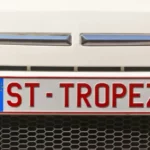Is your Mazda displaying a charging system malfunction warning? You’re facing one of the most critical electrical issues that can affect your vehicle. This warning indicates a problem with your car’s ability to maintain proper electrical power, which could leave you stranded if not addressed quickly. Let’s dive into what causes this problem and how you can get your Mazda back on the road safely.
What Is the Mazda Charging System?
The charging system in your Mazda is responsible for powering all electrical components while the engine is running and charging your battery for future use. It’s made up of three main components:
- Alternator: Generates electrical power while the engine runs
- Battery: Stores electrical energy for starting and backup power
- Voltage regulator: Controls the alternator’s output to prevent damage
When working correctly, your alternator produces 13.8-15.3 volts while running, keeping your battery charged and powering everything from headlights to your radio. When the system malfunctions, your Mazda is essentially running on borrowed time until the battery depletes.
Warning Signs of a Mazda Charging System Malfunction
Dashboard Warning Lights
The most obvious sign is the charging system malfunction warning on your dashboard, often accompanied by a message stating “Engine could stop unexpectedly.” You might also see a red battery light illuminated on your dash.
Electrical Issues
When your charging system starts failing, you’ll notice:
- Dimming headlights or interior lights
- Power windows moving slower than usual
- Radio cutting out intermittently
- Air conditioning performance decreasing
- Multiple electrical components failing at once
Engine Performance Problems
As the charging system deterioration progresses, you’ll experience:
- Engine stalling unexpectedly
- Difficulty starting (slow cranking)
- Rough idling or hesitation
- Complete inability to restart after turning off
One Mazda owner reported: “My CX-5 displayed the charging system malfunction warning while I was on the highway. Within 10 minutes, the headlights dimmed, and the engine stopped completely.”
Common Causes of Mazda Charging System Problems
1. Software Glitches in the ECU
Modern Mazdas rely on sophisticated computer controls. Sometimes, the Engine Control Unit (ECU) experiences a software glitch that triggers a false warning. This is particularly common in Mazda3, Mazda6, and CX-5 models.
2. Faulty Alternator
The alternator is the system’s workhorse, and when it fails, your entire electrical system suffers. Alternator failures in Mazdas typically occur around 80,000-120,000 miles. Signs include:
- Grinding or whining noises
- Burning smells from the engine compartment
- Battery warning light alongside the charging system warning
- Voltage readings below 13.5V while running
3. Bad Battery Connections
Corroded, loose, or damaged battery terminals prevent proper charging and can trigger system warnings. This is one of the easiest issues to check and fix.
4. Worn Serpentine Belt
The serpentine belt drives the alternator. If it’s cracked, glazed, or slipping, the alternator won’t spin at the proper speed, causing insufficient charging.
5. Failed Voltage Regulator
The voltage regulator ensures your alternator produces the correct amount of electricity. When it fails, you’ll experience either undercharging (voltage too low) or overcharging (voltage too high), both of which can trigger the warning.
Diagnosing Your Mazda’s Charging System
Quick Visual Inspection
Before getting technical, check these items:
- Look at battery terminals for corrosion (white or greenish buildup)
- Inspect the serpentine belt for cracks or looseness
- Check alternator connections for security
- Look for any obvious broken wires or components
Battery and Alternator Testing
For more thorough diagnosis:
- Battery Voltage Test: Use a multimeter to check battery voltage
- Engine off: Should read 12.3-12.8V
- Engine running: Should read 13.8-15.3V
- Alternator Output Test: With engine running at 1500 RPM:
- Connect multimeter to battery terminals
- Voltage should read between 13.8-15.3V
- Turn on headlights, A/C, radio – voltage shouldn’t drop below 13V
If your voltage with the engine running is below 13V, your alternator is likely failing to charge properly.
DIY Solutions to Try First
Reset the ECU (Software Glitch Fix)
Many Mazda owners have successfully resolved the warning by:
- Starting the engine and letting it idle for 20 minutes (allowing alternator to charge battery)
- Turning off all electrical accessories (radio, lights, A/C)
- Turning the engine off completely
- Waiting 10 minutes
- Restarting the vehicle
This procedure often clears temporary ECU glitches causing false warnings.
Clean Battery Connections
For corroded or loose connections:
- Disconnect the battery (negative terminal first)
- Clean terminals with a wire brush and baking soda/water mixture
- Dry thoroughly and reconnect (positive terminal first)
- Ensure connections are tight but not overtightened
Check and Tighten the Serpentine Belt
If your belt is loose but not damaged:
- Locate the belt tensioner (typically a pulley with a 15mm or 17mm bolt)
- Use a wrench to release tension slightly
- Check belt condition – replace if cracked or glazed
- Ensure proper tension – a properly tensioned belt should deflect about ½-inch when pressed
When Professional Repair Is Needed
Some charging system issues require professional attention:
Alternator Replacement
If testing confirms a bad alternator, replacement is necessary. Mazda alternator replacement typically costs:
| Mazda Model | Parts Cost | Labor Cost | Total Range |
|---|---|---|---|
| Mazda3 | $200-350 | $150-250 | $350-600 |
| Mazda6 | $250-400 | $150-300 | $400-700 |
| CX-5 | $300-450 | $200-350 | $500-800 |
| CX-9 | $350-500 | $250-350 | $600-850 |
The procedure involves:
- Disconnecting the battery
- Removing the serpentine belt
- Disconnecting electrical connectors
- Unbolting the alternator
- Installing the new unit
- Reconnecting everything in reverse order
ECU Reprogramming
For persistent software issues, a Mazda dealer or specialized shop can:
- Connect a diagnostic computer to your OBD-II port
- Flash the ECU with updated software
- Reset all electrical systems
- Test to ensure the problem is resolved
This specialized service typically costs $100-200 depending on your location and Mazda model.
Preventing Future Charging System Problems
Keep your Mazda’s charging system healthy with these preventative measures:
Regular Battery Maintenance
- Replace your battery every 3-4 years as preventative maintenance
- Clean terminals every 6-12 months
- Use a battery tender when storing the vehicle long-term
- Have battery tested annually after the 2-year mark
Driving Habits That Help
- Avoid frequent short trips that don’t allow full charging
- Drive for at least 20 minutes once weekly to maintain charge
- Limit excessive accessory use when idling for long periods
- Address warning lights immediately when they appear
Professional Checks
Have your charging system inspected during:
- Every other oil change
- Routine 30,000-mile service
- Before long road trips
- When purchasing a used Mazda
Understanding Charging System Repair Costs
Total repair costs vary based on the underlying issue:
| Component | Parts Cost | Labor Cost | Total Range |
|---|---|---|---|
| Battery | $100-180 | $0-50 | $100-230 |
| Alternator | $250-450 | $150-350 | $400-800 |
| Serpentine Belt | $20-50 | $30-100 | $50-150 |
| Voltage Regulator | $50-150 | $100-200 | $150-350 |
| Wiring Repair | $10-50 | $100-300 | $110-350 |
| ECU Reprogramming | $0-50 | $100-200 | $100-250 |
Technical Specifications: Mazda Charging Systems
Different Mazda models have different charging system specifications:
| Mazda Model | Alternator Output | Battery Type | Normal Voltage Range |
|---|---|---|---|
| Mazda3 | 90-130 Amps | 51R/L2 | 13.8-14.5V |
| Mazda6 | 100-150 Amps | 35/L3 | 13.8-14.8V |
| CX-5 | 110-150 Amps | 35/L3 | 13.9-15.0V |
| CX-9 | 130-180 Amps | L4/L5 | 13.9-15.1V |
| MX-5 Miata | 80-120 Amps | 51R | 13.8-14.5V |
Testing should be done at operating temperature with a fully charged battery for accurate results.
Driving with a Charging System Warning
If you’re driving when the warning appears:
- Turn off non-essential electrical systems (radio, A/C, heated seats)
- Head directly to a safe location
- Don’t turn off the engine if you need to continue driving
- Call for assistance rather than attempting long drives
- If the engine begins to run rough, pull over immediately
Remember that driving with a charging system malfunction can lead to complete electrical failure, including power steering and brake assist reduction, creating unsafe driving conditions.
Special Cases: Hybrid Mazda Models
Newer hybrid Mazdas like the CX-90 PHEV have more complex charging systems with additional components:
- High-voltage battery system with dedicated control module
- DC-DC converter replacing traditional alternator
- Multiple voltage regulation systems
When these models display charging system warnings, they should be taken to a dealer as DIY repairs on hybrid components can be dangerous and may void warranties.
Real-World Mazda Charging System Issues and Fixes
Many Mazda owners have reported charging system issues with successful resolutions:
- A 2019 Mazda3 owner discovered that aftermarket LED headlights were drawing excessive power, triggering warnings
- A 2018 CX-5 had a charging system malfunction caused by water intrusion to the alternator after driving through flooding
- A 2016 Mazda6 owner fixed persistent warnings by replacing both the battery and alternator, as the old battery had damaged the alternator
- Several 2014-2016 Mazda3 owners resolved warnings through ECU resets and software updates at dealerships
By understanding the causes, symptoms and solutions to charging system malfunctions, you can address this serious issue before it leaves you stranded. Always prioritize electrical system warnings, as they can quickly escalate from minor inconveniences to major problems if ignored.












